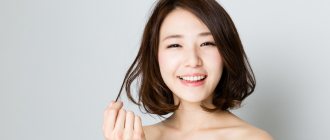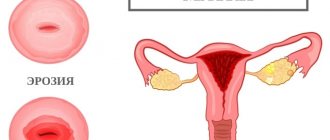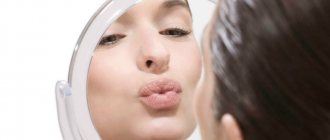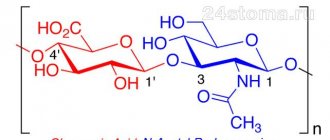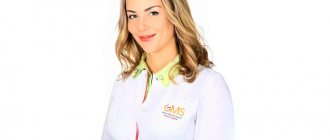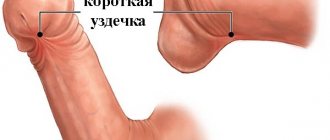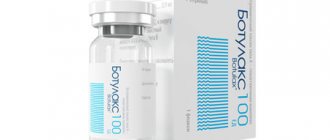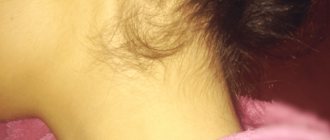One of the common non-infectious skin diseases that most often affects the facial skin and is chronic in nature is rosacea (rosacea, usually on the face or nose). This skin disease occurs mainly in women in the age range from 30 to 50 years. The disease has characteristic symptoms, but unclear causes, which complicates treatment.
But experienced medical doctors will be able to select an individual treatment plan and either completely relieve the patient of symptoms and cosmetic defects, or significantly improve his quality of life.
Composition and dosage form
Ascorutin contains 2 active components:
- rutoside (rutin, vitamin P): necessary for normal microcirculation of substances in cells, fluid outflow, strengthening and maintaining the elasticity of vascular walls;
- ascorbic acid (vitamin C): important for general metabolism, absorption and conversion of nutrients into energy, tissue trophism, maintaining immunity, synthesis of collagen and muscle fibers.
Ascorutin is produced in the form of tablets containing 50 mg. ascorbic acid and rutoside of natural origin. An extract from black currant berries is often used as a starting material, so the taste of the pills is pronounced, sweet and sour. Uncoated pills have a yellowish or light green color with small inclusions. Among the formative and additional components of the drug: sugar, starch, magnesium stearate, MCC and other compounds.
The drug Ascorutin D of a similar composition and form contains sorbitol instead of sugar and is safe for patients with diabetes.
Rosacea: what is it and what is dangerous if left untreated?
This is a disease that affects blood vessels and is characterized by redness of the face or certain areas of it. Its appearance leads to a deterioration in appearance due to cosmetic defects, as well as related psychological problems. In addition, rosacea (rosacea) on the face, if the eyes are affected, can cause keratitis and corneal ulceration.
Complications also include:
- thickening of the skin of the chin with the skin acquiring a bluish or burgundy tint (this is extremely rare and appears mainly in men);
- thickening of the earlobe (also rare and can cause hearing loss);
- thickening of the skin of the forehead, which leads to severe asymmetry of the forehead, especially against the background of chronic inflammation and stagnation of blood;
- thickening of the skin of the eyelids, in which the palpebral fissure narrows in the horizontal direction and the upper eyelid droops (causing a feeling of serious discomfort);
- scleritis (inflammation of the sclera of the eye), which is accompanied by pain, blurred vision, and eye irritation; complete loss of vision is possible.
The disease occurs in several stages, and the early form of development is much easier to treat and stop, so at the first signs you should immediately contact a dermatologist
.
How to treat rosacea on the face and can it be cured forever?
Effective, high-quality and long-lasting treatment is possible only under the supervision of a specialist who will determine the cause and stage of the disease and prescribe a course of treatment according to the individual characteristics of the patient (gender, age, clinical picture, etc.).
In very rare cases, the disease can go away on its own, but generally rosacea (rosacea) is a disease that is chronic and can progress with age. This differs from rosacea to acne, which often disappears on its own once you leave adolescence. Therefore, treatment should be such as to increase the time of remission and reduce the frequency of relapses and their duration. Treatment, like prevention, must be comprehensive and, as already mentioned, carried out only under the supervision of a doctor.
Rosacea: symptoms and forms
Main symptoms:
- redness of the facial skin mainly in the T-zone (forehead, nose, chin) and on the cheeks (persistent redness);
- redness may spread to the back and chest;
- the appearance of pink bumps without treatment turns into pustules, acne and pimples;
- the skin on the affected areas thickens;
- profuse lacrimation in the final stages;
- rhinophyma (redness and thickening of the skin in the nose area, most often in men);
- redness, dryness, itching and flaking around the eyes.
There are different definitions of the stages of rosacea, as well as their symptoms. According to this, the severity of the disease, and the methods and timing of its treatment are determined. To get rid of symptoms, a whole range of measures is required, which must be selected individually.
Stages of rosacea
As a rule, the first stages occur unnoticed by the patient. But you need to see a doctor if you notice:
- the appearance of red, long-lasting spots after contact with hot or cold water, as well as after hot drinks or alcohol;
- persistent expansion of capillaries with a local increase in temperature;
- the appearance of tubercles and the formation of irregularities on the skin with their further transformation into pustules;
- expansion of the vascular network, that is, the appearance of redness and tubercles without provoking factors;
- the formation of brownish-red papules and nodules with thickening areas of redness.
As a rule, the intensification of symptoms occurs gradually, but in some cases, rosacea develops rapidly, for example, during pregnancy or after childbirth. If treatment is not started in time, subsequent pregnancies may be complicated by more intense forms of the disease and require longer treatment.
How does Ascorutin work?
The vitamins contained in the drug quickly dissolve in the stomach and are absorbed through the mucous membrane into the blood. In the complex, ascorbic acid and rutoside complement and enhance each other’s effectiveness. Both compounds are active antioxidants. They help reduce intoxication of the body during inflammatory and infectious processes, increase resistance, regulate blood clotting and fluidity, preventing red blood cells from sticking together.
In the complex therapy of vascular diseases, Ascorutin helps restore peripheral blood supply, restore the integrity of capillaries, prevent and eliminate edema, trophic ulcers, improve the supply of nutrients to tissues and the removal of toxins.
Main indications for taking Ascorutin
The drug is prescribed to prevent the development and treatment of pathologies accompanied by insufficient blood circulation, blood disorders or vitamin deficiency. Among them:
- tendency to increased platelet formation;
- vascular damage by salicylates;
- hemorrhagic diathesis;
- hemorrhage in the retina;
- violation of intraocular pressure;
- atherosclerotic changes;
- rheumatism;
- Iron-deficiency anemia;
- some forms of hypertension;
- venous insufficiency;
- varicose veins: lower extremities, rectum;
- trophic ulcerative lesions;
- thrombophlebitis;
- consequences of severe scarlet fever, measles;
- frequent nosebleeds;
- changes in blood composition as a result of radiation exposure.
In most cases, Ascorutin is indicated in combination with other medications or vitamin-mineral medications.
As an adjuvant, Ascorutin is used in vitamin therapy for menstrual disorders: for heavy or irregular discharge. Its regular use helps to normalize pancreatic function and the absorption of glucose by cells. This helps stabilize the condition of diabetic patients at an early stage.
For diseases of the joints and spine, the product improves metabolic processes in the tissues of cartilage and skeleton, prevents the leaching of calcium, supports the formation of intra-articular lubrication, and slows down inflammatory reactions.
Treatment methods for rosacea: recommendations
Success in treatment can only be achieved with complex effects and simultaneous correction of the functioning of all organs and systems. Source: Modern approach to the treatment of rosacea. Teplyuk N., Shurubey V. Doctor No. 12, 2015. p. 72-75. Therefore, the patient, in addition to the dermatologist, can be advised by other specialists - an endocrinologist, an ophthalmologist, a gastroenterologist, a psychologist.
Rosacea is a chronic disease, so it cannot be completely cured. Key goals of therapy:
- reduction of symptoms (redness, pustules, spider veins and papules);
- inhibition of disease progression;
- formation of the longest possible remissions;
- prevention of complications and exacerbations;
- elimination of possible cosmetic defects in the facial area;
- improving quality of life.
Key approaches to therapy include complete care for affected skin for rosacea and individual selection of cosmetics. Equally important is lifestyle changes and nutritional correction: the doctor develops a diet for rosacea and determines what is and is not possible.
The basis of therapy is drug treatment, additional methods of therapy, which are selected based on the form, severity of the pathology and existing complications. The list of medications for rosacea includes a variety of drugs: antibiotics from the tetracycline group, macrolide drugs, vitamins, metronidazole. Systemic isotretinoin preparations may be prescribed. Usually the drugs are administered orally; injections for rosacea are rarely used.
Various ointments and creams are used topically to treat rosacea with antibiotics, metronidazole, retinoids, benzyl benzoate and other components. Source: Innovations in external therapy for rosacea. Olisova O.Yu., Kochergin N.G., Smirnova E.A. Russian Journal of Skin and Venereal Diseases No. 5, 2022. p. 270-274. Agents that stabilize the walls of blood vessels, sedatives, and artificial tears (for eye damage) are indicated.
Non-drug therapy complements treatment. This includes laser treatment for rosacea, IPL therapy, microcurrent treatment, and cryotherapy.
In case of complications, pronounced phymatous formations, surgical removal of the affected areas of rosacea is indicated.
How to use Ascorutin correctly
Tablets are recommended to be taken after or during meals. This way the vitamins are better absorbed and act faster. The drug should be taken with plain water. In the absence of contraindications - berry or fruit juices. It is not advisable to use alkaline mineral water, as it neutralizes the acids contained in the tablets.
Adults are recommended to take 200–600 mg. Ascorutin per day (2–6 tablets), depending on the type of pathology present. To prevent hypovitaminosis, it is enough to drink 1 piece. twice a day. For treatment - repeat the dose 3-4 times a day. The drug should be swallowed whole, without chewing, so that the acids do not harm tooth enamel.
Ascorutin is allowed for children from 4 years of age: 0.5–1 tablet per day. For babies, it is recommended to grind the product into powder or dilute it in 1 tsp. slightly warm water. After taking it, it is advisable to rinse your mouth thoroughly with water.
Recommended course of continuous intake of the vitamin complex: 2–4 weeks. If necessary, the doctor can prescribe a prolonged dose - up to 2 months, or a cyclic dose - up to six months. To avoid complications, you should not prolong taking Ascorutin or increase the dose yourself.
Acne vulgaris (acne)
Acne vulgaris usually occurs between the ages of 14 and 25, while rosacea occurs between 30 and 50 years. It is also necessary to carry out a differential diagnosis with late acne .
Common manifestations with late acne
Appearance after 40 years
Papulopustular skin rashes
Overproduction of sebum – oily skin
Possibly - prolonged exposure to the sun - a common “trigger”
Differential diagnosis
Criteria not typical for acne are diagnostic for rosacea:
Centrofascial erythema is redness of the central part of the face, which may be accompanied by subjective sensations of itching, burning or tingling. A must-have for rosacea!
Outbreaks of erythema - occur when nerve endings are irritated by provoking factors: stress, heat exposure, drinking hot and alcoholic drinks, etc.
Couperosis – appearance on the face, because the disease affects the vascular bed.
No comedones!
Anamnesis
An important part of any consultation. If the rash was present at a young age, the development of late acne is most likely.
